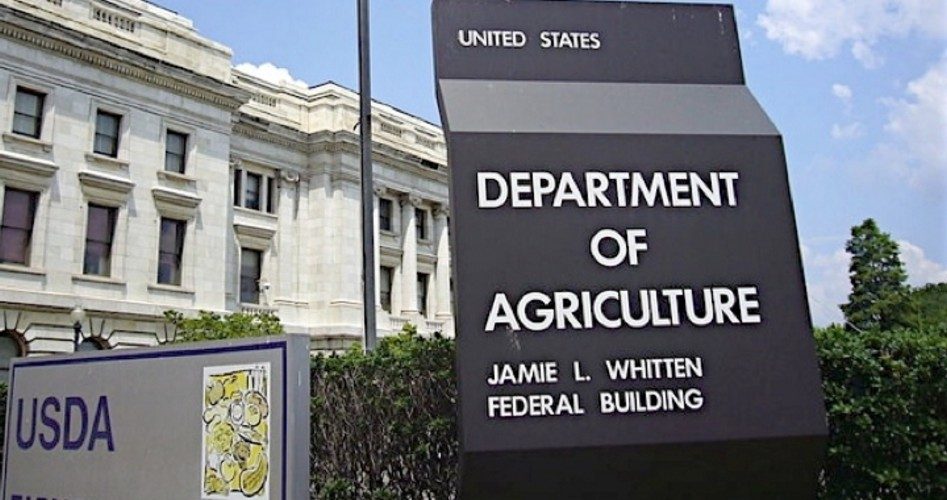
One hundred and fifty years ago, on May 15, 1862, Abraham Lincoln signed legislation to create the U.S. Department of Agriculture. The Republican Party Platform of 1860, adopted at the same Republican Convention that nominated Lincoln, included planks to provide for private homesteading of federal lands and to supply federal aid for a transcontinental railroad. These planks were intended to help Republicans win farm votes in the West, and both were ultimately enacted into law.
Two other measures that were not in the platform but were likewise intended to appeal to the farm vote were the setting aside of federal land for “land grant colleges” (the system of state universities so ubiquitous in the Midwest and Great Plains) and the establishment of a federal Department of Agriculture. When Lincoln first signed the law creating such a department, that agency was not a cabinet-level post. Indeed, the federal cabinet at that point in America’s history was quite small.
In might have been thought that Lincoln, who was commander-in-chief of the Union forces during the Civil War, might have had other things on his mind besides enacting a political promise to farmers that was not even included in the Republican platform; however, in his first address to Congress, he stated:
Agriculture, confessedly the largest interest of the nation, has not a department or a bureau, but a clerkship only, assigned to it in the Government. While it is fortunate that this great interest is so independent in its nature as to not have demanded and extorted more from the Government, I respectfully ask Congress to consider whether something more can not be given voluntarily with great advantage.
The words of Lincoln, to Americans today, would seem to show disarming honesty. Farmers have not “… demanded and extorted from the Government.…” The Founding Fathers warned against “factions” and feared that interests might come to treat the common government of all Americans as something from which special groups of citizens might, indeed, have “…demanded and extorted from the Government….”
In his final message to Congress, Lincoln referred to the Department of Agriculture as the “People’s Department.” It was undoubtedly true that in 1865, a majority of Americans worked on farms — and worked very hard. The country’s farmers were independent businessmen of the very best sort. And in the beginning, the “People’s Department” was primarily engaged in benign activities such as collecting statistics and disseminating information about the best farm practices.
But even in 1865, the Department of Agriculture was created to help just one particular group of Americans, not all citizens equally. Today this 150-year-old cabinet agency has such a broad mandate that it is involved in everything from food stamps and myriad nutrition programs to global warming issues and environmentalism, telecommunications, global food security, insurance, disaster relief, and much more.
Constitutionalists recognize that these areas do not need federal government interference and control. Insurance and telecommunications, for example, are very efficiently operated in the private sector. And while the inspection of meat by the Department of Agriculture provides a useful service to farmers and consumers, in the absence of such a federal program, the food industry would itself have a compelling interest in providing consumers with a well audited and effective system of insuring the sale of only safe meat. Customer goodwill is often the most valuable part of a corporation’s assets. Farmers have long supported effective private associations — such as the Future Farmers of America (FFA) and 4-H clubs — which help promote farming.
State governments can and do have their own departments of agriculture, which focus attention on their own particular problems of crops and livestock. State governments have created small, low-cost (or even user-supported) boards — such as the Boll Weevil Commission — directed at specific problems connected to particular crops.
The Vermont Department of Agriculture, for instance, works to optimize the harvesting and marketing of maple syrup, while the Florida Department of Agriculture devotes a great deal of its time and effort to maximizing the Sunshine State’s citrus fruit crops.
Voters in both Vermont and Florida may also decide, in times of budget shortfalls such as now, which state departments need to be cut. When there is interaction between federal and state departments, the departments of state government can use this to stop legislators from reducing funding because of potential loss of federal funding. This is true not only of the federal and state departments of agriculture, but of many other areas as well, such as transportation, welfare, commerce, and labor.
The U.S. Department of Agriculture was the very first explicitly created “special interest” agency. The previous cabinet agencies had universal application to all Americans. Examples include Postmaster General (created in 1775, before the Declaration of Independence); State (created in 1781, before the Constitution); Treasury (1789); War (1789); Navy (1789); Attorney General (1789); and Interior (1849).
After the Department of Agriculture, the new cabinet agencies were formed either to advocate for one group of Americans against another — such as the Department of Commerce and the Department of Labor — or to propose federal solutions for problems to which the private sector (state or local governments) could best respond. Examples of these new agencies include Heath and Human Services, Education, Housing and Urban Development, Transportation, Energy, and Veterans Affairs.
Many Americans today would question what, if anything, the U.S. Department of Agriculture has done in the last 150 years that could not have been done better by farmers themselves or by specific state agencies. The “People’s Department” stands today as another part of the dubious legacy of President Lincoln’s determined expansion of the federal government.



